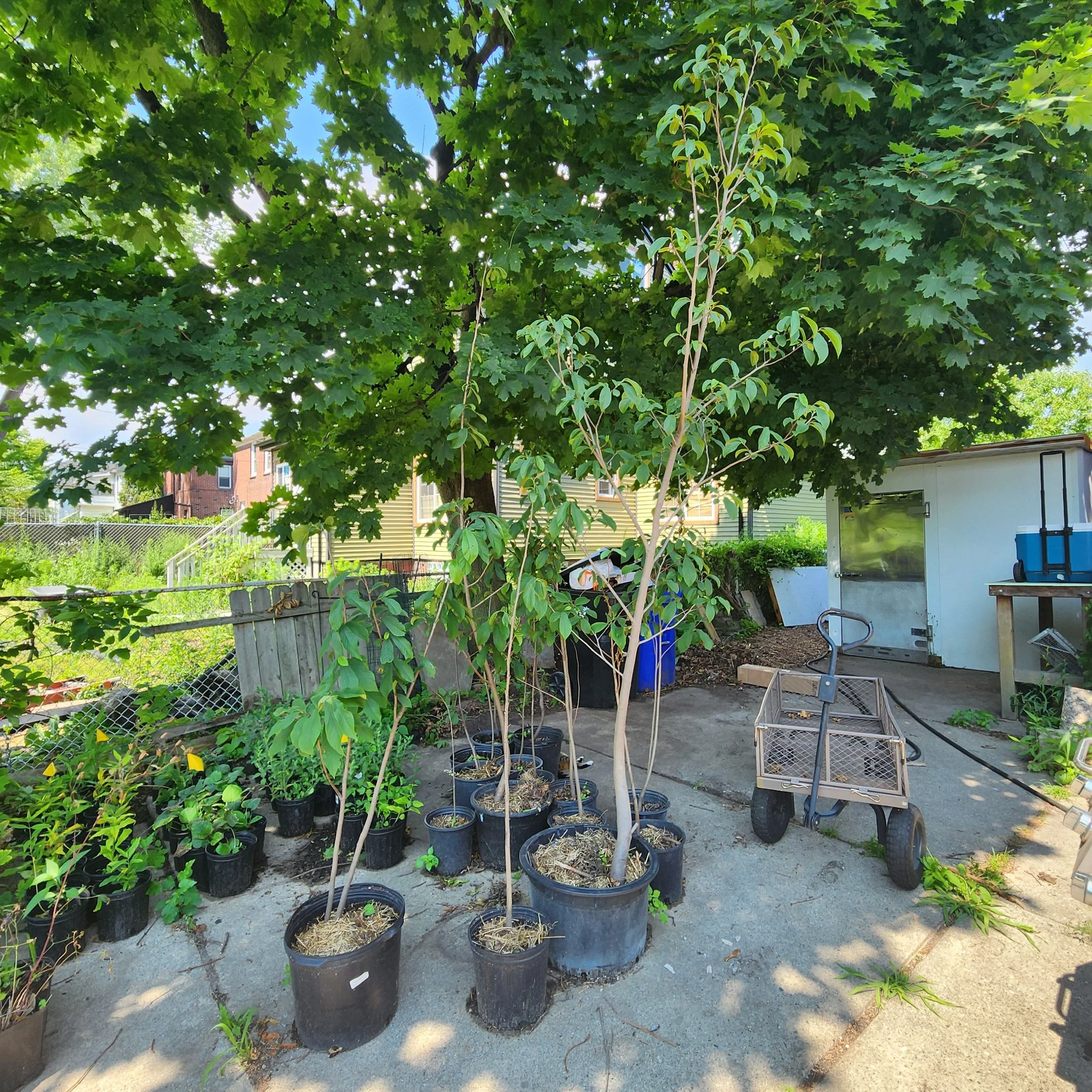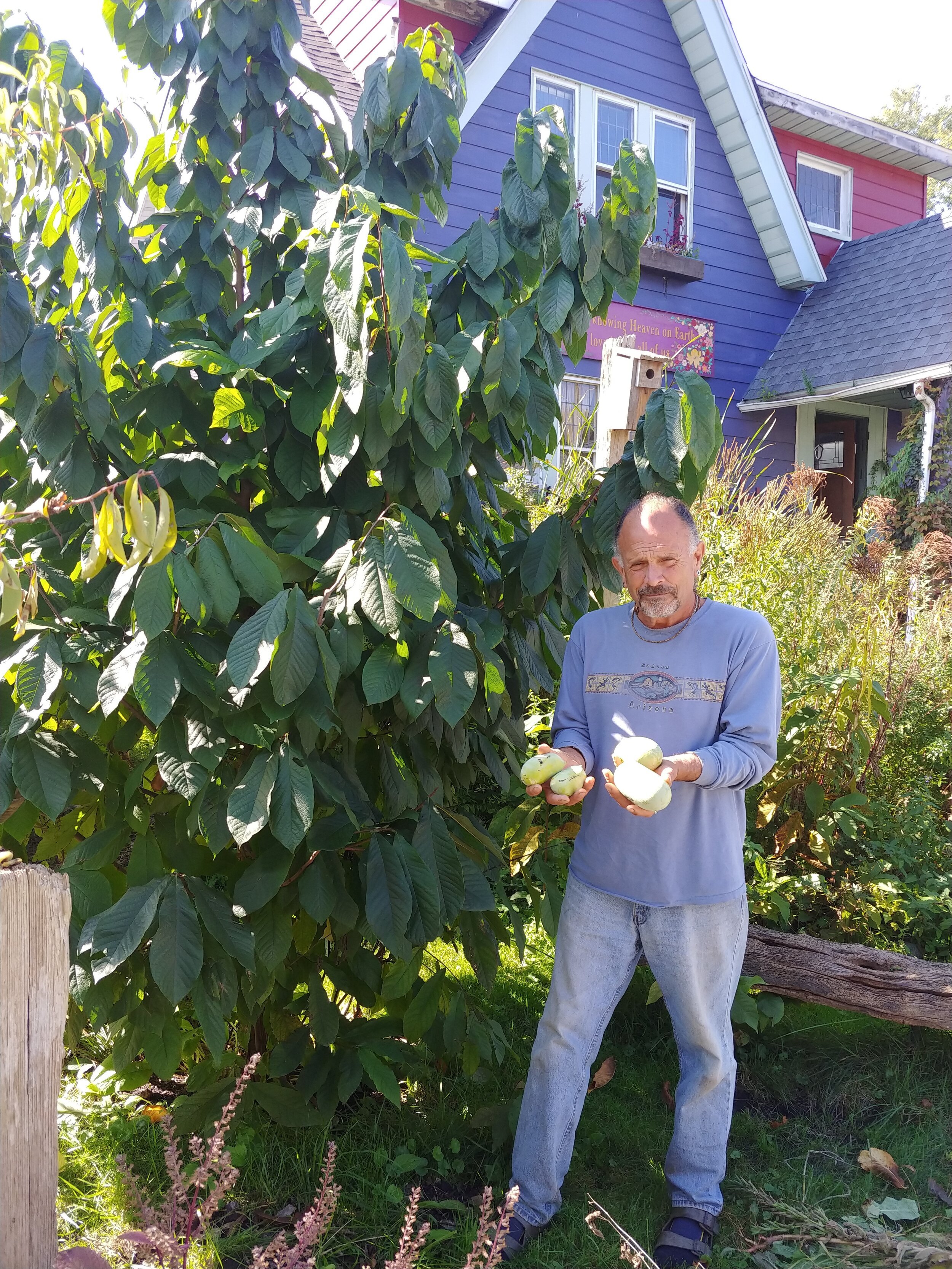 Image 1 of 10
Image 1 of 10

 Image 2 of 10
Image 2 of 10

 Image 3 of 10
Image 3 of 10

 Image 4 of 10
Image 4 of 10

 Image 5 of 10
Image 5 of 10

 Image 6 of 10
Image 6 of 10

 Image 7 of 10
Image 7 of 10

 Image 8 of 10
Image 8 of 10

 Image 9 of 10
Image 9 of 10

 Image 10 of 10
Image 10 of 10











Asimina triloba, Paw Paw Tree, Gallon, 5-gallon Pots
FS, Zone 3, 15-25’ x 6’, wet to medium, deer and rabbit resistant
We will add inventory in the summer, probably late June. These will be propagated from suckers. We will dig them up and pot them up in early spring.for. We pot up the suckers in the spring. We will wait to ensure they take and are viable for planting. These will be ideal for late summer/fall planting. We have not started the seeds in the last couple of seasons as the time it take for growth from a seedling adds years on unitilyou have fruit.
Asimina triloba, commonly called Paw Paw, is a deciduous tree that grows 15 to 25’ tall and around 15 wide. Paw Paws have the unique distinction of being America’s only indigenous fruit tree. Yup, except for Paw Paws, all other fruit trees, such as apple, apricot, pear, peach, etc: came from other countries. An understory tree which occurs in low bottom woods, wooded slopes, ravines and along streams, it often spreads by root suckers to form colonies or thickets.
Since it blooms in late April and May, often before bees are active, the small blossoms emit a slightly rotten scent to attract flies and beetles for pollination. It takes two Paw Paws to successfully pollinate and produce fruit. The tree produces clusters of 4-6” long fruits (with large black seeds) that mature in early fall. The fruit, which is rarely found in supermarkets because they bruise so easily, is sweet and delicious. They have a creamy custard-like consistency and taste somewhat tropical, almost banana/mango-like.
The two Paw Paw trees in front of our house on 305-313 Newport Street bear an abundance of ripe fruits in late September. We slice up whatever fruits we can find (when they drop to the ground, you know they are ripe) and pass them around for everyone to taste. Paw Paws need more than one genetic strain for best fruit-set. The Paw Paws we sell have been started from several different stains of seed, and some suckers.
Wildlife eagerly seek out the fruits and often beat humans to the harvest. Paw Paws are the host plant for caterpillars of the Zebra Swallowtail..
FS, Zone 3, 15-25’ x 6’, wet to medium, deer and rabbit resistant
We will add inventory in the summer, probably late June. These will be propagated from suckers. We will dig them up and pot them up in early spring.for. We pot up the suckers in the spring. We will wait to ensure they take and are viable for planting. These will be ideal for late summer/fall planting. We have not started the seeds in the last couple of seasons as the time it take for growth from a seedling adds years on unitilyou have fruit.
Asimina triloba, commonly called Paw Paw, is a deciduous tree that grows 15 to 25’ tall and around 15 wide. Paw Paws have the unique distinction of being America’s only indigenous fruit tree. Yup, except for Paw Paws, all other fruit trees, such as apple, apricot, pear, peach, etc: came from other countries. An understory tree which occurs in low bottom woods, wooded slopes, ravines and along streams, it often spreads by root suckers to form colonies or thickets.
Since it blooms in late April and May, often before bees are active, the small blossoms emit a slightly rotten scent to attract flies and beetles for pollination. It takes two Paw Paws to successfully pollinate and produce fruit. The tree produces clusters of 4-6” long fruits (with large black seeds) that mature in early fall. The fruit, which is rarely found in supermarkets because they bruise so easily, is sweet and delicious. They have a creamy custard-like consistency and taste somewhat tropical, almost banana/mango-like.
The two Paw Paw trees in front of our house on 305-313 Newport Street bear an abundance of ripe fruits in late September. We slice up whatever fruits we can find (when they drop to the ground, you know they are ripe) and pass them around for everyone to taste. Paw Paws need more than one genetic strain for best fruit-set. The Paw Paws we sell have been started from several different stains of seed, and some suckers.
Wildlife eagerly seek out the fruits and often beat humans to the harvest. Paw Paws are the host plant for caterpillars of the Zebra Swallowtail..